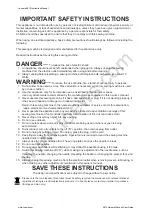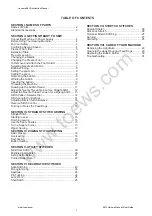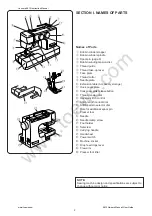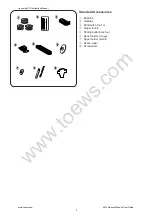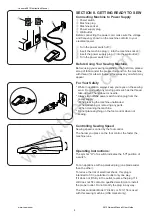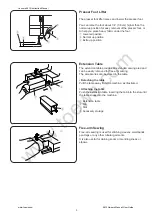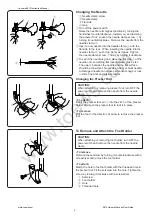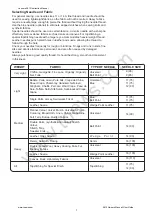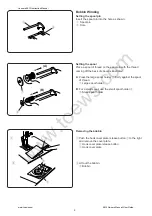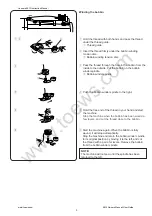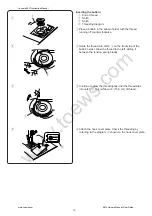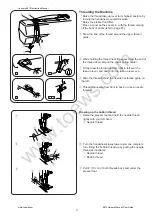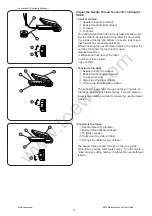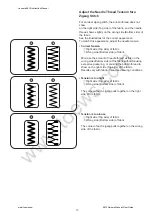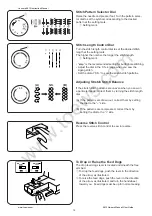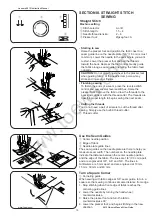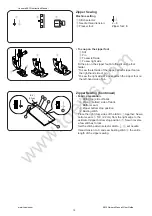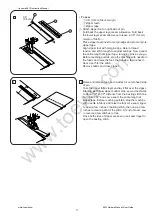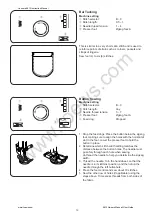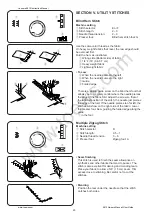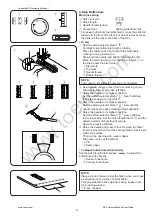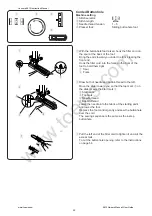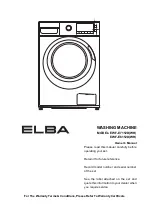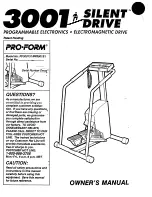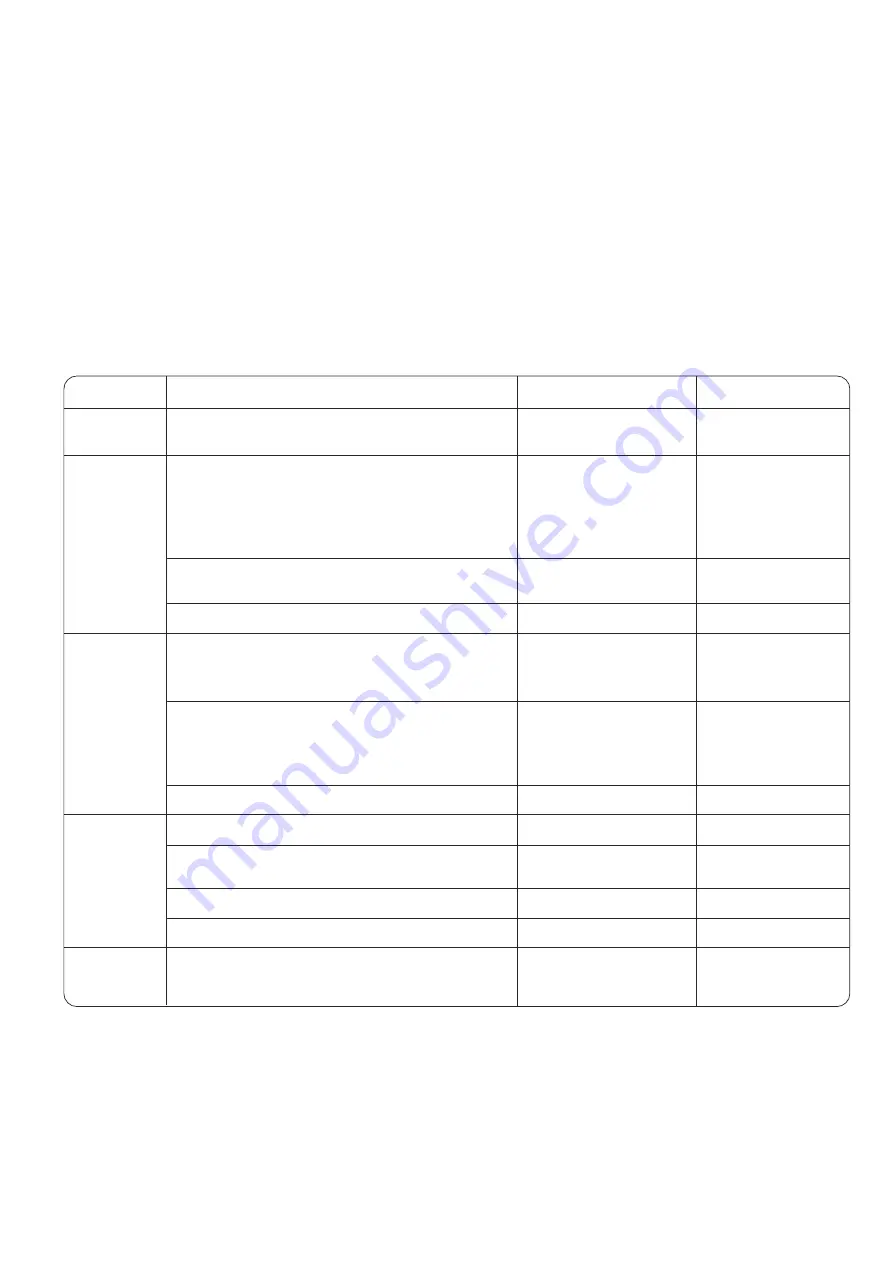
www.toews.com
7
Selecting Needle and Fabric
For general sewing, use needle sizes 11 or 14. A fine thread and needle should be
used for sewing lightweight fabrics, so the fabric will not be marred. Heavy fabrics
require a needle large enough to pierce the fabric without fraying the needle thread.
Use the blue needle (optional) to eliminate skipped stitches when sewing knits and
synthetic fabrics.
Special needles should be used on certain fabrics. A denim needle with a sharp tip
effectively pierces dense fabrics such as denim and canvas. For topstitching, a
special topstitching needle with a larger eye accommodates heavier weight thread.
Leather needles punch small holes in leather and suede, allowing the thread to
follow through the hole.
Check your needles frequently for rough or blunt tips. Snags and runs in knits, fine
silks and silk-like fabrics are permanent, and are often caused by damaged
needles.
Always purchase a good quality thread. It should be strong, smooth and consistent
in thickness.
Heavy
Denim, Sailcloth, Ticking
Denim
16 (100)
Double Faced Wool, Heavy Coating, Fake Fur,
Drapery Fabrics
Universal
16 (100)
Leather, Suede
Wedge Point Leather
16 (100)
Canvas, Duck, Upholstery Fabrics
Universal
18 (110)
Topstitching for Special Finish
Topstitching
11 (75)
14 (90)
Medium
Flannel, Velour, Velvet, Muslin, Velveteen, Poplin,
Corduroy, Broadcloth, Linen, Chintz, Gabardine,
Felt, Terry, Burlap, Quilted Fabrics
Universal
14 (90)
Double Knits, (synthetic and natural) Stretch
Velour,
Stretch Terry,
Sweater Knits
Ball Point
14 (90)
Leather, Vinyl, Suede
W e d g e P o i n t
14 (90)
Very Light
Chiffon, Georgette, Fine Lace, Organdy, Organdy
Net, Tulle
Universal
Ball Point
9 (65)
9 (65)
Light
Batiste, Voile, Lawn, Pure Silk, Crepe de Chine,
Sheer Crepe, Chambray, Handkerchief Linen,
Gingham, Challis, Percale, Wool Crepe, Peau de
Soie, Taffeta, Satin, Silk Surah, Satin-backed Crepe,
Qiana
Universal
Blue
11 (75)
11 (75)
12 (80)
Single Knits, Jersey, Swimwear, Tricot
Blue
Ball Point
11 (75)
11 (75)
Leather, Suede
Wedge Point Leather
11 (75)
WEIGHT
FABRIC
TYPE OF NEEDLE
NEEDLE SIZE
All
Janome 5812 Instruction Manual
www.toews.com
5812 Owners Manual/ User Guide


